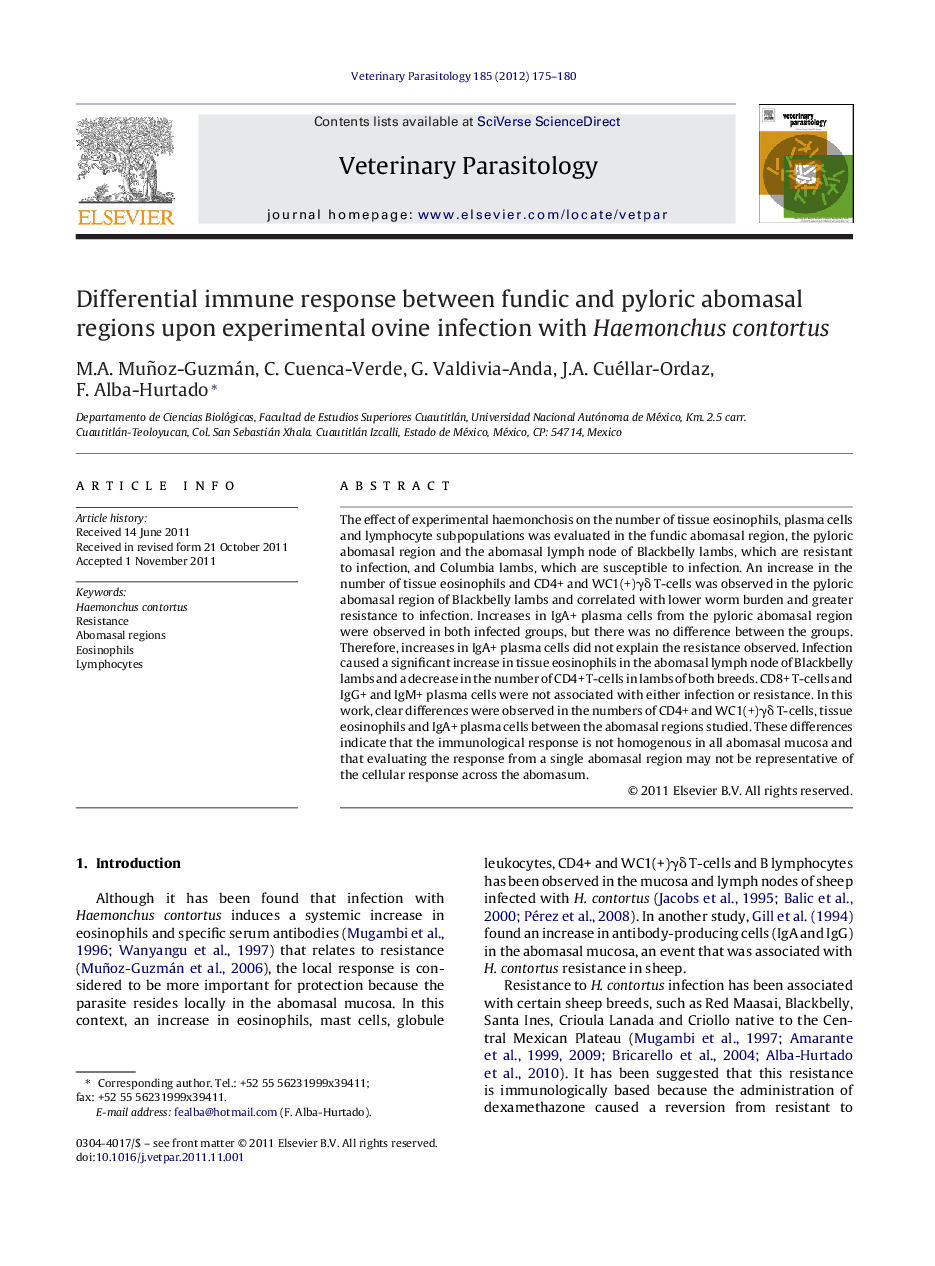| Article ID | Journal | Published Year | Pages | File Type |
|---|---|---|---|---|
| 5805126 | Veterinary Parasitology | 2012 | 6 Pages |
The effect of experimental haemonchosis on the number of tissue eosinophils, plasma cells and lymphocyte subpopulations was evaluated in the fundic abomasal region, the pyloric abomasal region and the abomasal lymph node of Blackbelly lambs, which are resistant to infection, and Columbia lambs, which are susceptible to infection. An increase in the number of tissue eosinophils and CD4+ and WC1(+)γδ T-cells was observed in the pyloric abomasal region of Blackbelly lambs and correlated with lower worm burden and greater resistance to infection. Increases in IgA+ plasma cells from the pyloric abomasal region were observed in both infected groups, but there was no difference between the groups. Therefore, increases in IgA+ plasma cells did not explain the resistance observed. Infection caused a significant increase in tissue eosinophils in the abomasal lymph node of Blackbelly lambs and a decrease in the number of CD4+ T-cells in lambs of both breeds. CD8+ T-cells and IgG+ and IgM+ plasma cells were not associated with either infection or resistance. In this work, clear differences were observed in the numbers of CD4+ and WC1(+)γδ T-cells, tissue eosinophils and IgA+ plasma cells between the abomasal regions studied. These differences indicate that the immunological response is not homogenous in all abomasal mucosa and that evaluating the response from a single abomasal region may not be representative of the cellular response across the abomasum.
